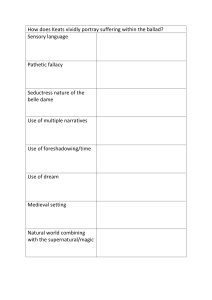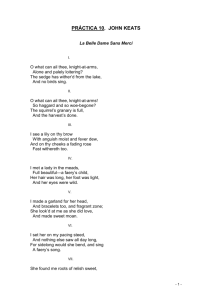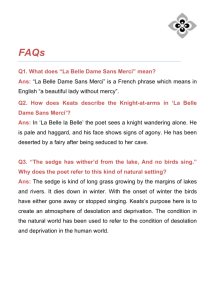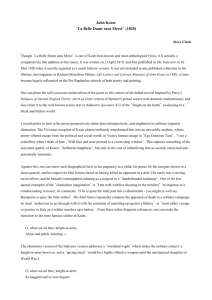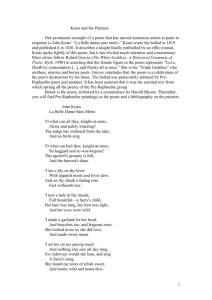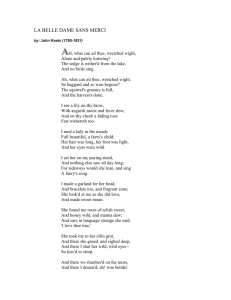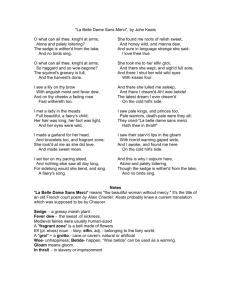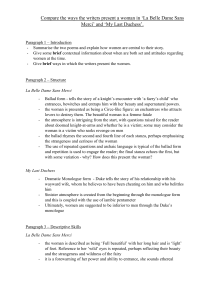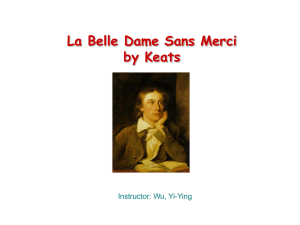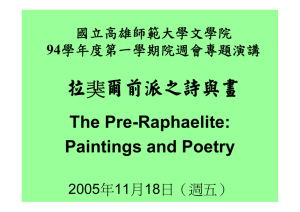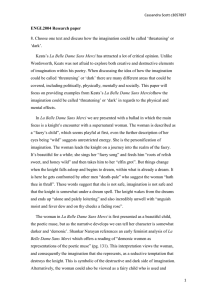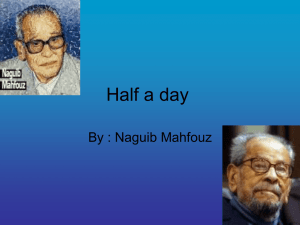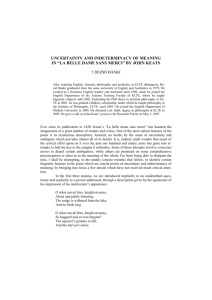annotation.assignGABE.doc
advertisement
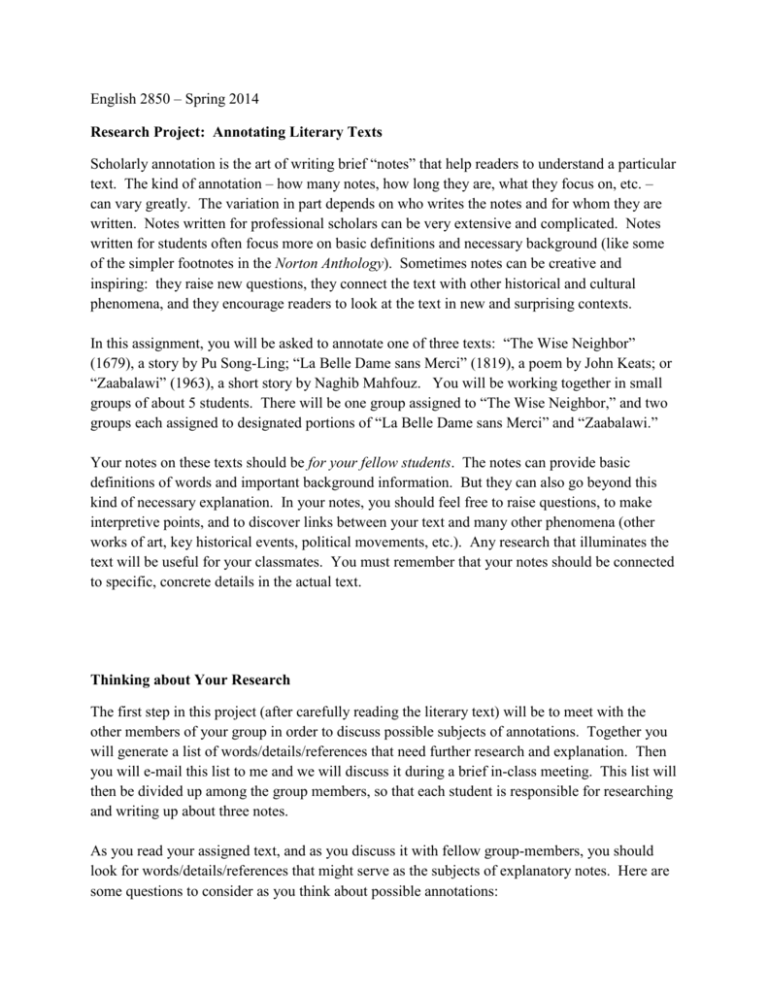
English 2850 – Spring 2014 Research Project: Annotating Literary Texts Scholarly annotation is the art of writing brief “notes” that help readers to understand a particular text. The kind of annotation – how many notes, how long they are, what they focus on, etc. – can vary greatly. The variation in part depends on who writes the notes and for whom they are written. Notes written for professional scholars can be very extensive and complicated. Notes written for students often focus more on basic definitions and necessary background (like some of the simpler footnotes in the Norton Anthology). Sometimes notes can be creative and inspiring: they raise new questions, they connect the text with other historical and cultural phenomena, and they encourage readers to look at the text in new and surprising contexts. In this assignment, you will be asked to annotate one of three texts: “The Wise Neighbor” (1679), a story by Pu Song-Ling; “La Belle Dame sans Merci” (1819), a poem by John Keats; or “Zaabalawi” (1963), a short story by Naghib Mahfouz. You will be working together in small groups of about 5 students. There will be one group assigned to “The Wise Neighbor,” and two groups each assigned to designated portions of “La Belle Dame sans Merci” and “Zaabalawi.” Your notes on these texts should be for your fellow students. The notes can provide basic definitions of words and important background information. But they can also go beyond this kind of necessary explanation. In your notes, you should feel free to raise questions, to make interpretive points, and to discover links between your text and many other phenomena (other works of art, key historical events, political movements, etc.). Any research that illuminates the text will be useful for your classmates. You must remember that your notes should be connected to specific, concrete details in the actual text. Thinking about Your Research The first step in this project (after carefully reading the literary text) will be to meet with the other members of your group in order to discuss possible subjects of annotations. Together you will generate a list of words/details/references that need further research and explanation. Then you will e-mail this list to me and we will discuss it during a brief in-class meeting. This list will then be divided up among the group members, so that each student is responsible for researching and writing up about three notes. As you read your assigned text, and as you discuss it with fellow group-members, you should look for words/details/references that might serve as the subjects of explanatory notes. Here are some questions to consider as you think about possible annotations: -- Are there references to real-world places, historical events, or famous people? Would knowing about these places, events, or people help you to understand the text? -- Are there specific words that you do not know? Or are there words that are being used in a strange way -- perhaps because the word meant something different a long time ago? -- Are there references to particular religious or philosophical or political ideas? -- Are there references to cultural practices (like marriage, or child-rearing, or ways of making a living) that vary according to time and place? -- Are there references to other works of art (literature, music, visual art, or other artforms)? -- Are there particular words or phrases that seem important to note, perhaps because they are ambiguous or especially meaningful? There are many, many options for research. You do not need to worry about “explaining everything” or writing every possible relevant note. You just need to make sure that your set of notes provides concrete, useful information that illuminates the literary text for your classmates. Requirements for Each Student: Written Notes and Oral Presentation Each student must write up about three notes and submit them to me as an MS Word attachment (approximately 2.5 pages long). Each student must also speak to the rest of the class (for about 5 minutes) about his or her notes, as part of a group oral presentation. In both writing and presenting one’s notes, the key task is to explain clearly how your research helps us to understand what is happening in the story or poem. You always need to keep in mind the actual words of the story or poem. Written notes will be due on the dates of the oral presentations on the three texts. The dates are as follows: “The Wise Neighbor,” by Pu Song-Ling: Wednesday, February 19 “La Belle Dame sans Merci,” by John Keats: Wednesday, March 10 “Zaabalawi,” by Naghib Mahfouz: Wednesday, April 30 The presentations of notes on Keats and Mahfouz may extend into a second class-period. Future handouts will give you some tips on conducting your research, and guidance for writing up your notes.
